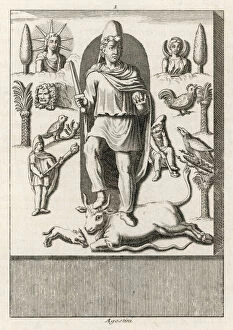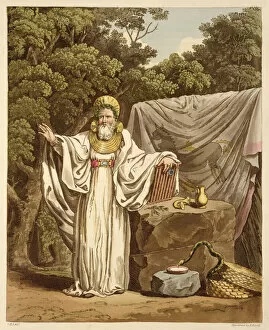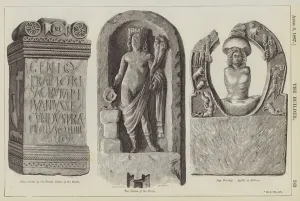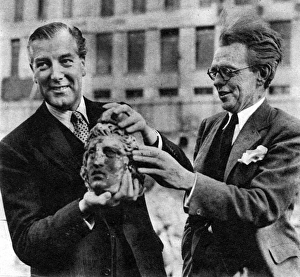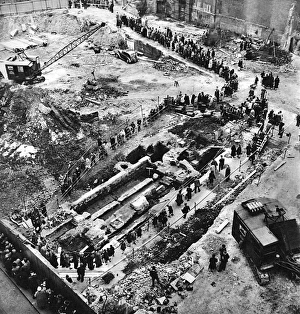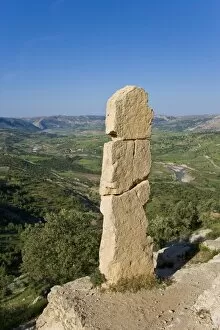Mithras Collection
"Mithras: The Enigmatic Sun-Worshipper Unveiled" Delving into the depths of ancient mythology, Mithras emerges as a captivating figure shrouded in mystery and intrigue
All Professionally Made to Order for Quick Shipping
"Mithras: The Enigmatic Sun-Worshipper Unveiled" Delving into the depths of ancient mythology, Mithras emerges as a captivating figure shrouded in mystery and intrigue. Symbolized by his iconic act of slaying a bull, this marble depiction showcases the power and strength attributed to Mithras. The followers of Mithras, known as the Sun-Worshippers, revered him as a divine entity associated with light and vitality. Through an exquisite engraving, we catch a glimpse into their fervent devotion towards this enigmatic deity. Intriguingly, an aquatint from 1815 reveals an Arch Druid donning his judicial habit - perhaps hinting at connections between Mithraism and other ancient belief systems. This amalgamation of traditions adds another layer to the complex tapestry surrounding Mithras' worship. A remarkable marble relief portrays a youthful divinity believed to be none other than Mithra himself. His radiant presence captivates onlookers while leaving them pondering over his true nature and significance within ancient society. Further exploring historical events intertwined with religious symbolism, we encounter a stone bas-relief depicting Ardashir II's investiture and victory. This artwork hints at how influential the cult was during that period - its impact reaching even royal circles. An engraving showcasing "Mithras slaying the bull" transports us back in time when these rituals were performed within grottoes adorned with mysterious symbols. These cavernous spaces served as sanctuaries for devotees seeking spiritual enlightenment through secret ceremonies. Roman Britain also bears witness to the influence of Mithraic beliefs through its Roman Wall and art forms prevalent during that era. This engraving offers glimpses into how deeply ingrained these practices were within British society at that time.

